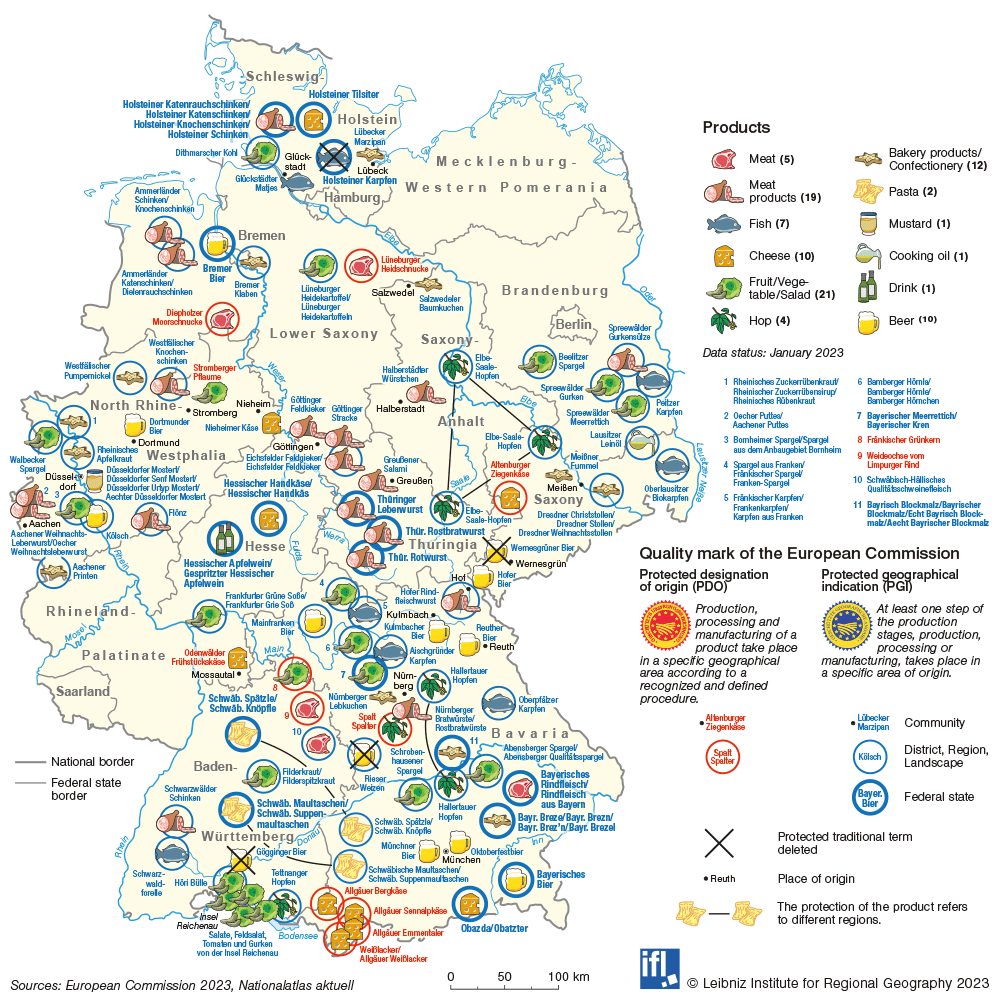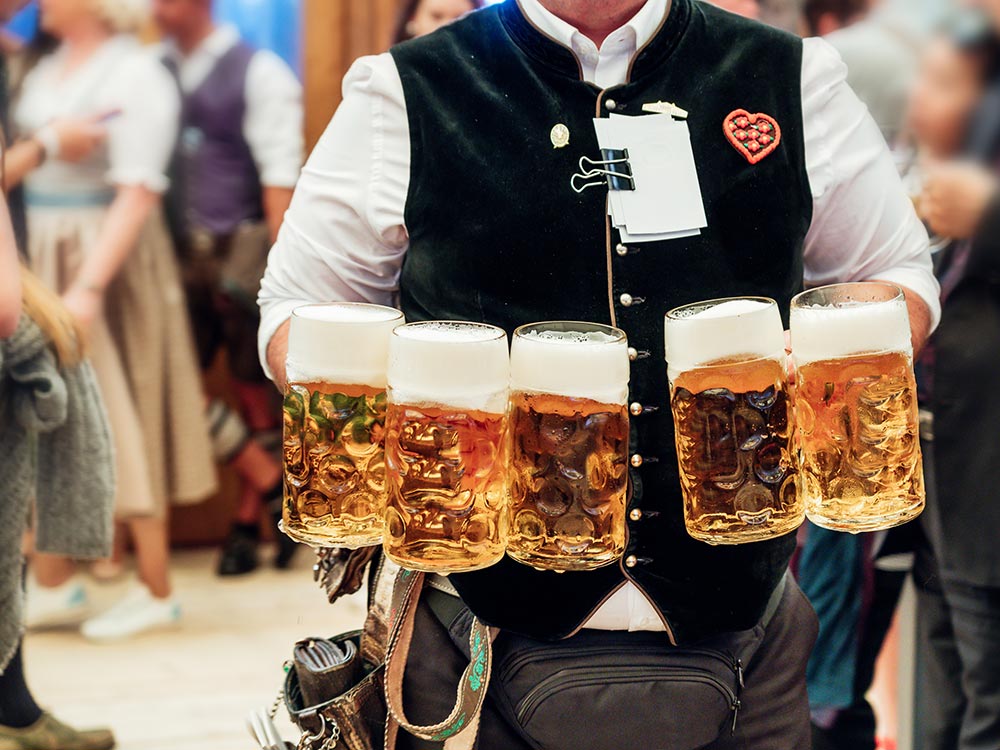
“Oktoberfestbier” (Oktoberfest beer)
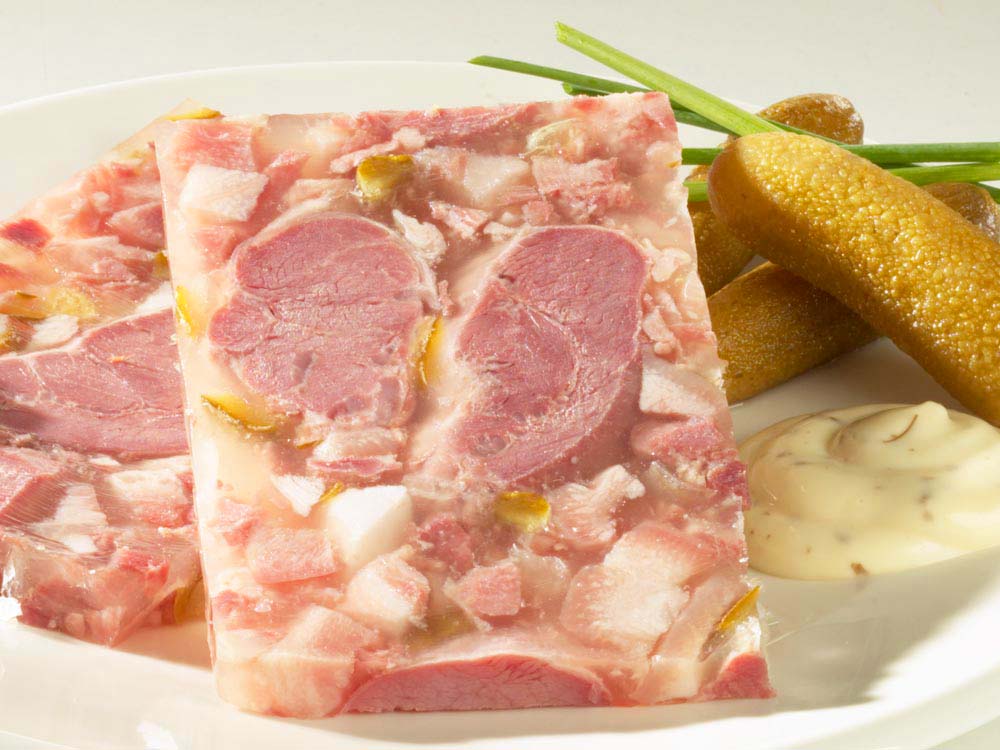
“Spreewälder Gurkensülze” (porc product)
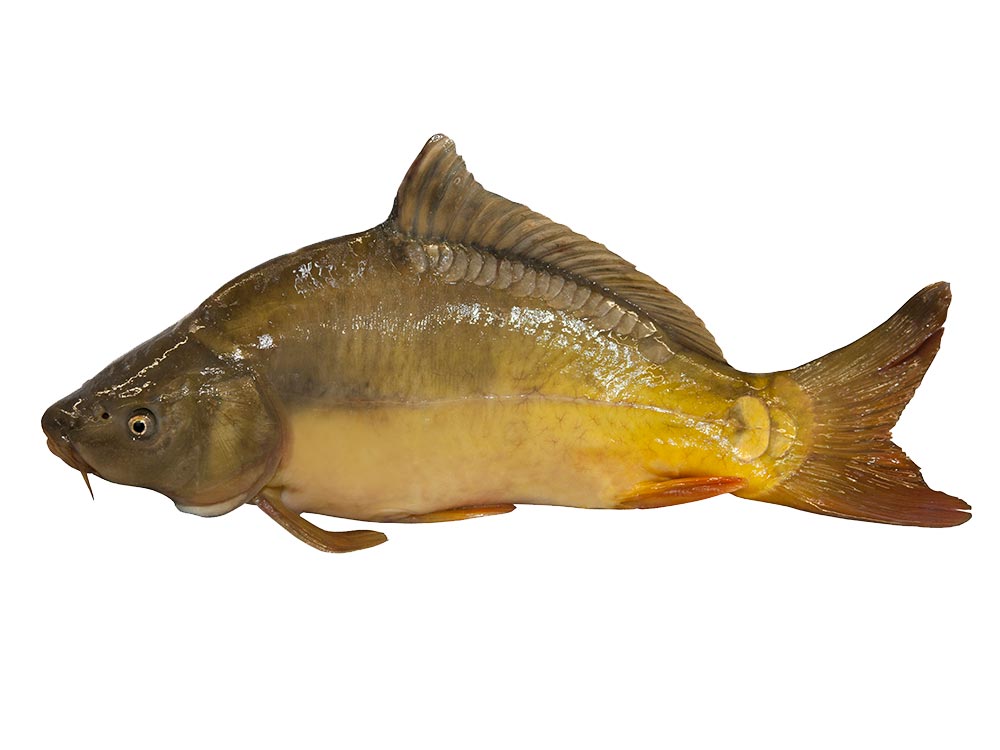
“Peitzer Karpfen” (carp)
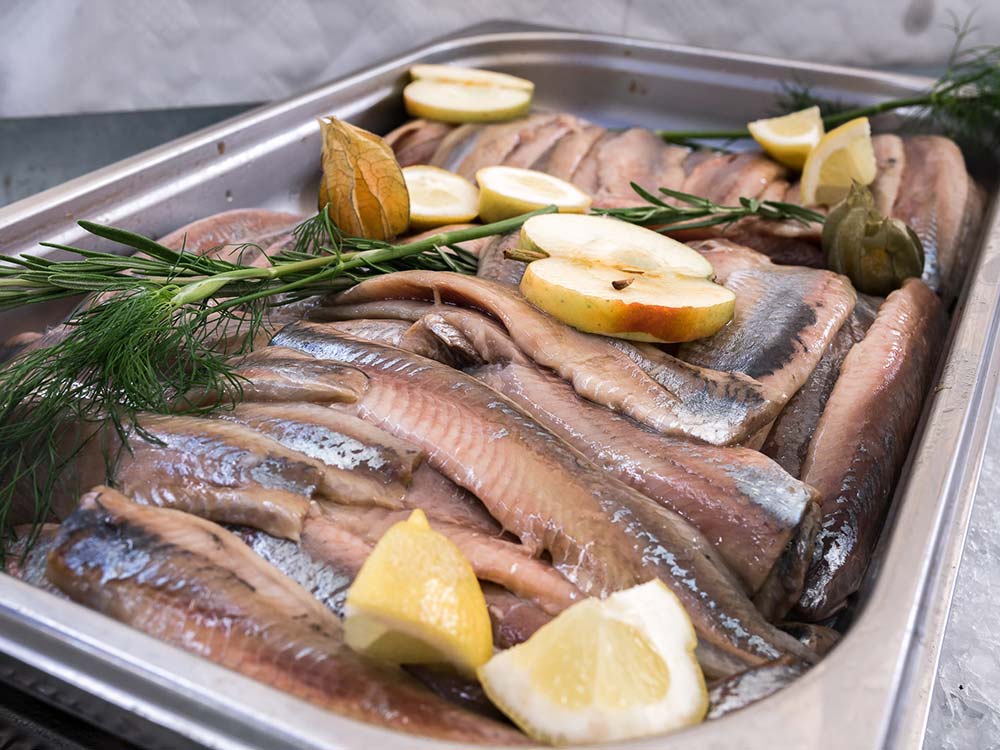
“Glückstädter Matjes”
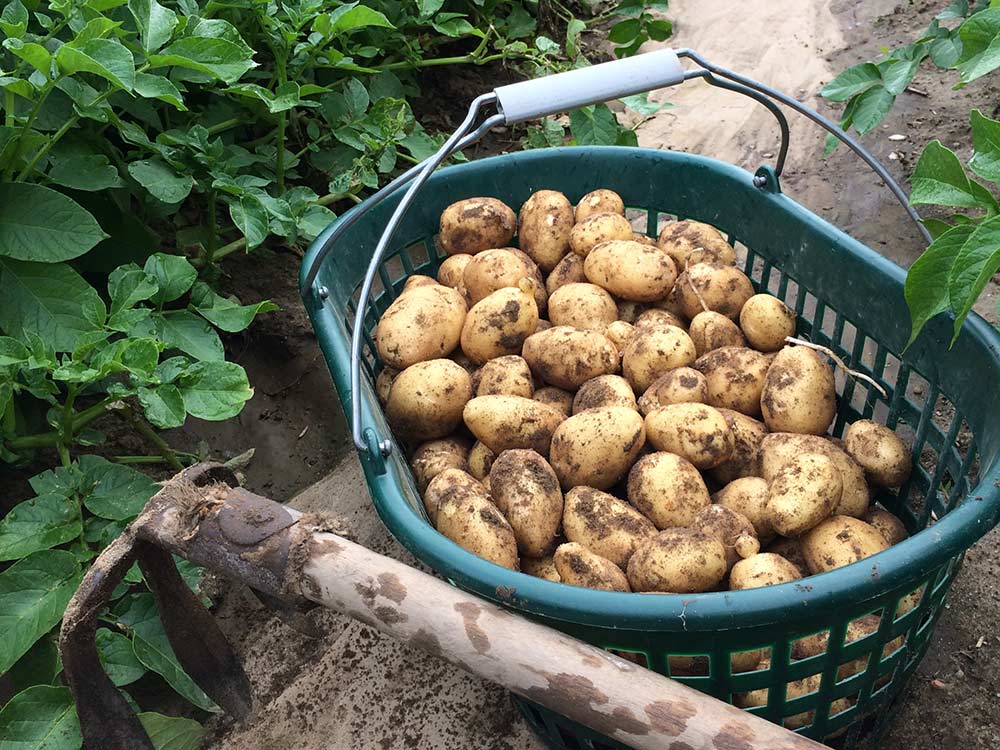
“Lüneburger Heidekartoffeln” (heath potatoes)
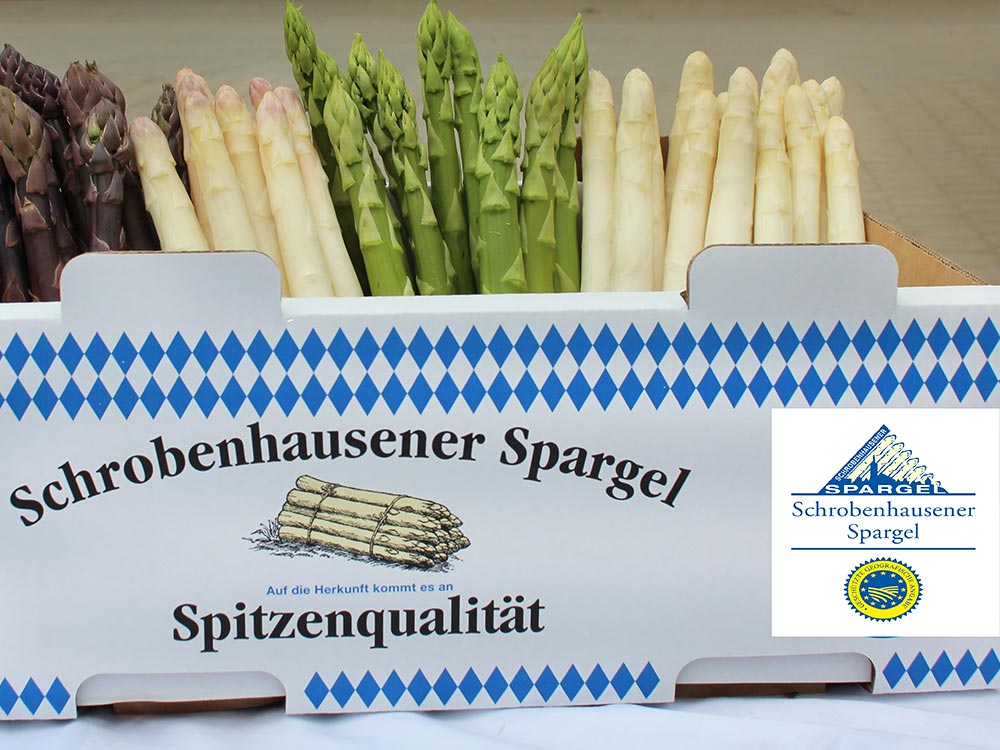
“Schrobenhausener Spargel” (asparagus)
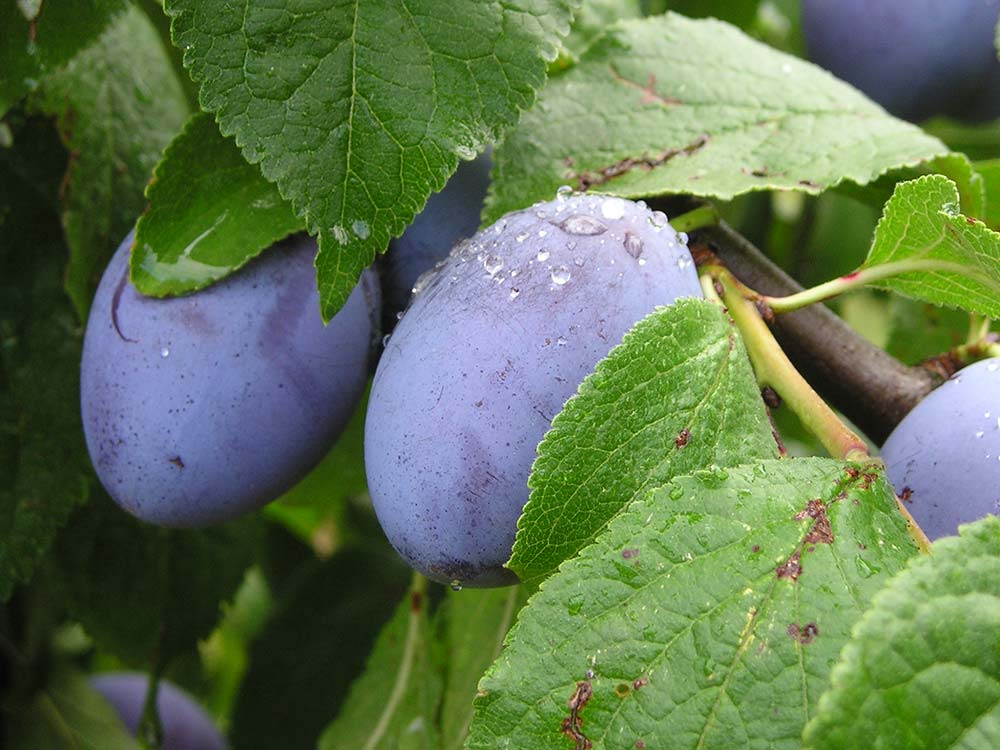
“Stromberger Pflaume”

“Dresdner Christstollen” (Dresden christstollen)
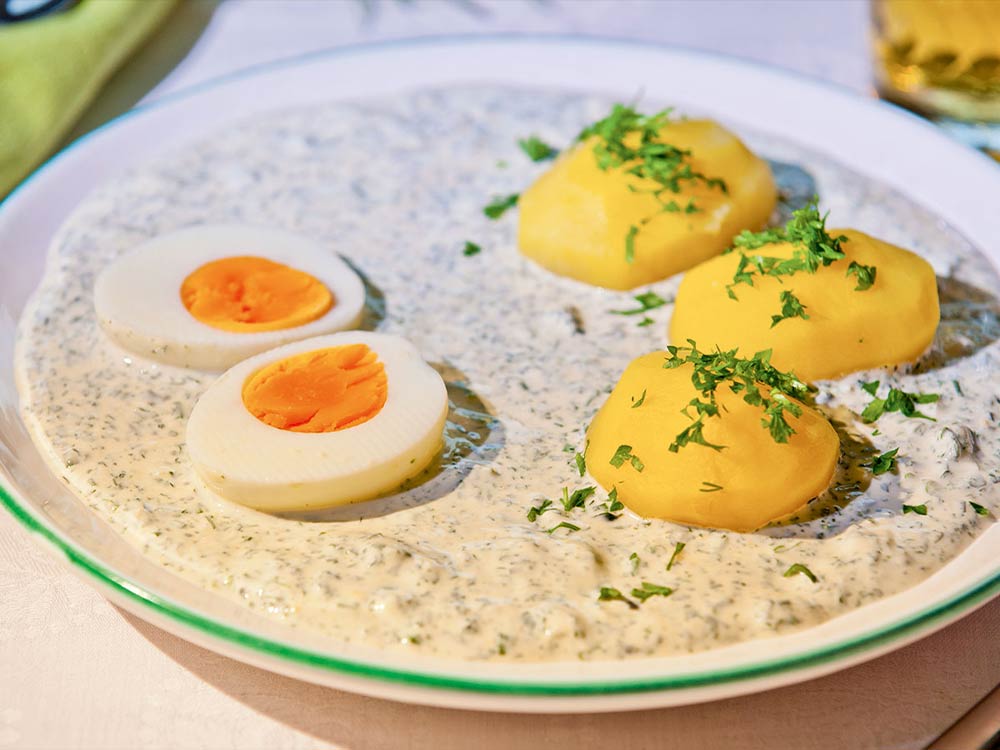
“Frankfurter Grüne Soße” (Frankfurt green sauce)
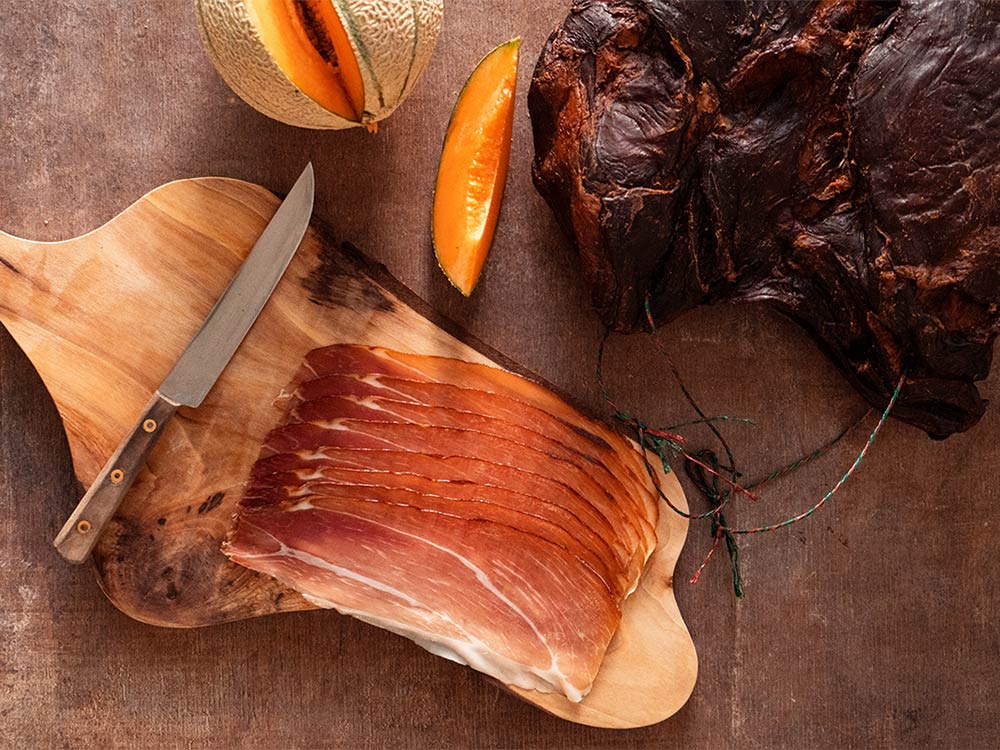
“Schwarzwälder Schinken” (Black Forest Ham)

“Aachener Printen”

“Thüringer Rostbratwurst” (Thuringian grilled sausage)
“Oktoberfestbier” is delicious, even outside the Oktoberfest season. However, not just any beer can be called “Oktoberfestbier”. Indeed, this name is a protected geographical indication of origin, included in the register for protected geographical indications of origin by the European Commission on 28 October 2022.
It was an occasion covered thoroughly by the media. This great interest might also have something to do with the fact that Oktoberfest was back on in 2022 after a two-year break due to COVID-19.
In any case, it drew public awareness to an IP right that has been in place since 14 July 1992, that is, for more than 30 years, safeguarding certain agricultural products and foodstuffs against misuse and imitation in all of Europe.
During this time period, 95 such designations have been registered for Germany. Some examples: “Bayerische Breze“ (soft pretzel), “Beelitzer Spargel“ (asparagus), “Westfälischer Pumpernickel“ (dark sourdough bread).
An essential condition for the protection of a geographical indication of origin is the existence of a link between the characteristics of the product in question and its production in the respective area of origin.
There are two types of protection. The protection as a protected designation of origin (PDO) on the one hand and the protection as a protected geographical indication (PGI) on the other. The link to the area of origin has to be particularly strong for a PDO. All production steps must take place in the respective area. For a PGI, it is enough for one production step, like processing, to be carried out in the area of origin.
The current legal basis is Regulation (EU) No 1151/2012 of 21 November 2012.
This European IP right is granted by the European Commission, who registers the IP rights in the eAmbrosia database.
The difference between geographical indications of origin and trade marks is that the latter can only be used by the holder, while the former can be used by all producers established in the area, provided that the product is produced as stipulated in the product specification.
The registration as a “protected designation of origin” or a “protected geographical indication” is possible only after the competent national authority as well as the European Commission have given a positive assessment of the application for registration. The competent national authority in Germany is the DPMA. All applications are published in the national as well as in the European examination procedure. This gives people with a legitimate interest, in particular producers of the product in question, the possibility to lodge an opposition.
In 2022, the European Commission established protection for three designations for Germany: “Spreewälder Gurkensülze” (PGI), “Peitzer Karpfen” (PGI) and, as mentioned previously, “Oktoberfestbier” (PGI).
The entry “Holsteiner Karpfen” (PGI) (carp) was deleted from the register following a request by the protection association.
The requests for amendments concerning “Meißner Fummel” (PGI) (pastry), “Glückstädter Matjes” (PGI) (soused herrings) and “Fränkischer Karpfen” (PGI) (carp), seeking to change the respective specifications, were assessed by the DPMA with positive results and subsequently transmitted to the European Commission.
The proceedings concerning “Spreewälder Gurke”, and in particular the amendment of the existing specification, were reopened before the Federal Patent Court Bundespatentgericht after remittal by the Federal Court of Justice Bundesgerichtshof (BGH I ZB 78/18). The opposing party withdrew their complaint during the hearing on 21 April 2022, so the request for amendment can now be passed on to the European Commission.
In the future, it will also be possible to have artisanal and industrial products protected with a geographical indication of origin. This will considerably extend the scope of protection, which in Europe is currently limited to agricultural products and foodstuffs, to products like clocks, cutlery, textiles or porcelain from a specific region.
There already is a corresponding draft regulation concerning the projected EU protection scheme. The registration of those products is also intended to consist of two phases: During phase one, an examination is conducted by the respective national authority and, in phase two, the subsequent examination is carried out at EU level, the competent authority being EUIPO.
Food with protected geographical status
